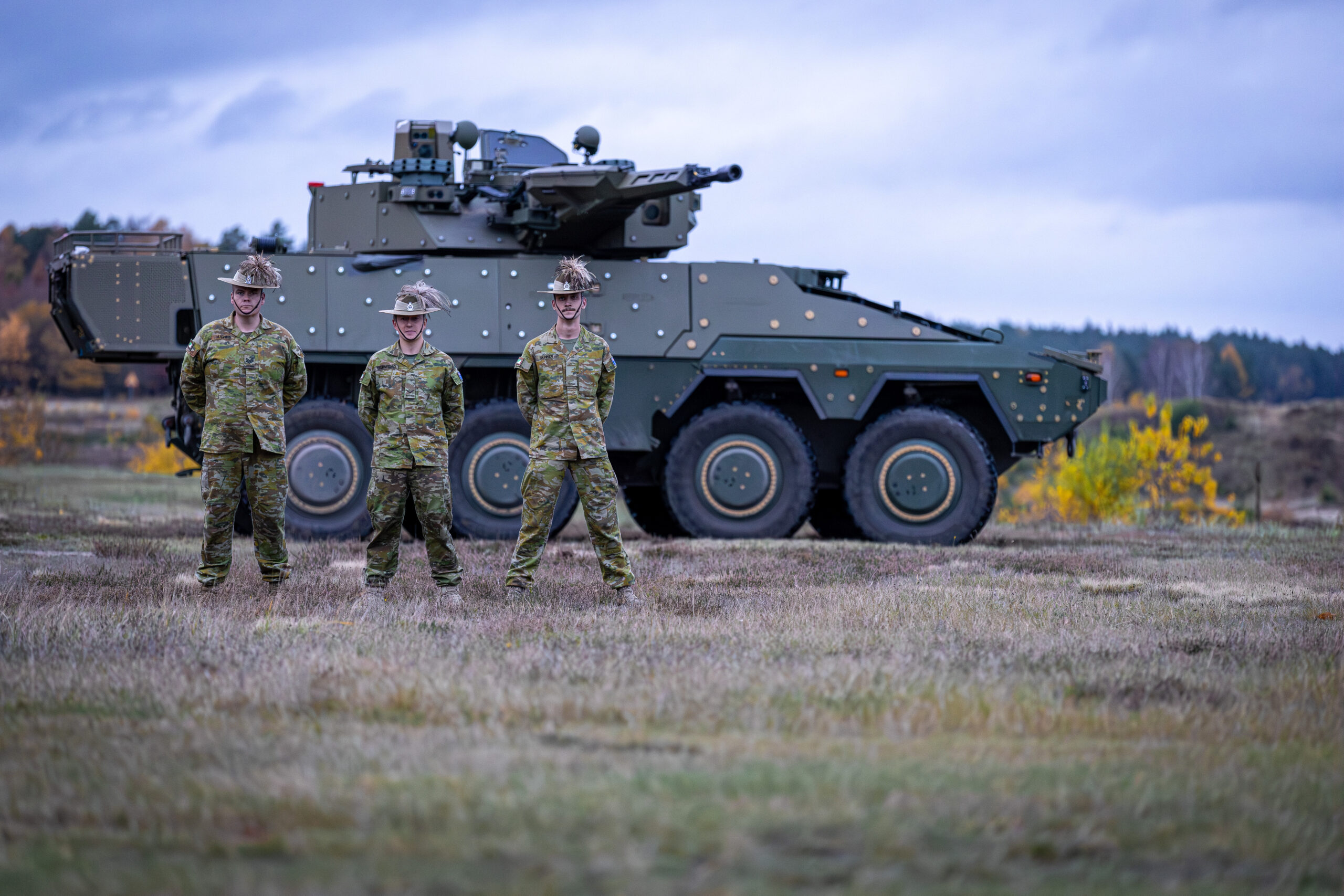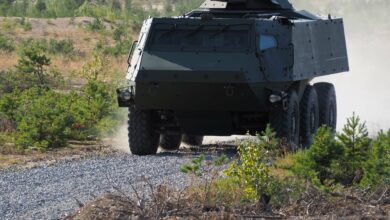Australia Obtains New Boxer Design Input From Soldiers
The Australian Army has collected armored fighting vehicle layout suggestions from soldiers to support the new design of its upcoming Boxer Block II fleet.
Troops from the Australian Army’s 2nd/14th Light Horse Regiment (Queensland Mounted Infantry) participated in the design project at Rheinmetall’s facility in Unterluss.
During this time, the Lance 2.0 remote-controlled turret for the Boxers was placed in initial production.
The activity involved firing the vehicle’s MK30-2 autocannon and MAG58 machine gun in extreme weather conditions while testing its programmable munitions capability.
It also saw a briefing on the Boxer Block II design, new weapon control systems, communications, combat intelligence, surveillance, and reconnaissance capabilities.

Simultaneously, the infantry group was invited to Rheinmetall’s site in Kassel to configure future design options for the Boxer’s active protection system.
They also received additional information on the ballistic and blast testing programs being held in Germany and Australia.
“I found it incredibly beneficial to see the input that soldiers from [Queensland Mounted Infantry] have made to the design of Block II Boxer, particularly in the crew operation of the weapon systems, and be able to tell them how it has been implemented,” Crew Commander LCpl. Ben Crawford said.
Boosting ‘Confidence’ for Warfighters
According to the Australian Department of Defence, obtaining design input from army troops is vital to the effectiveness of the future Boxer tranche due to their direct experience in operating the initial batch.
“The implementation of an emergency escape hatch for the driver on the Block II design ensures improved survivability,” Queensland Mounted Infantry Crew Driver Trooper Liam Skinner stated.
“Seeing lessons learned from Block I now being implemented into Block II provided me with confidence moving forward.”
Boxer Procurement
The Boxer procurement is part of Canberra’s efforts to modernize its ground forces by replacing older armored systems.
The plan for the new vehicles was conceptualized in 2016. Two years later, the Australian government selected Germany’s Rheinmetall to develop the platform.
The first Boxer tranche was delivered between 2019 and 2021, while the Block II will begin later this year.













